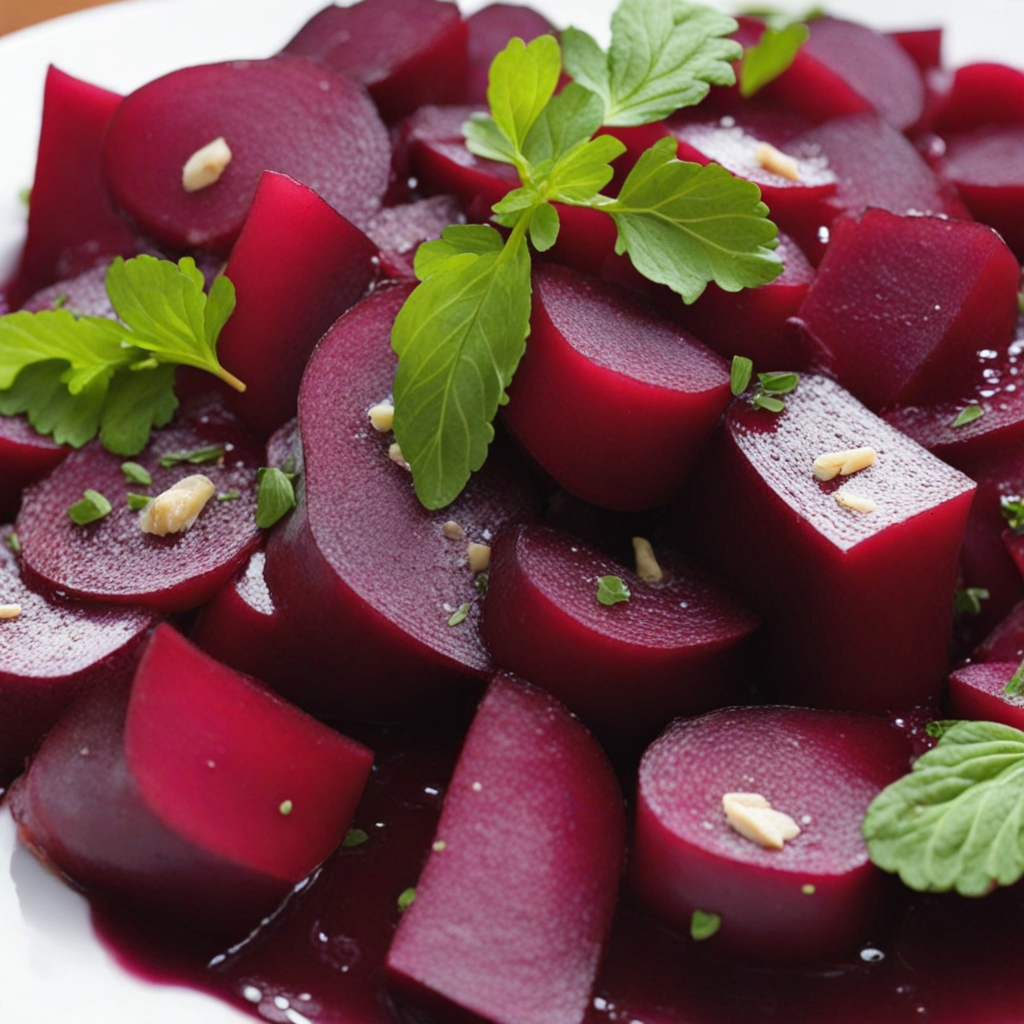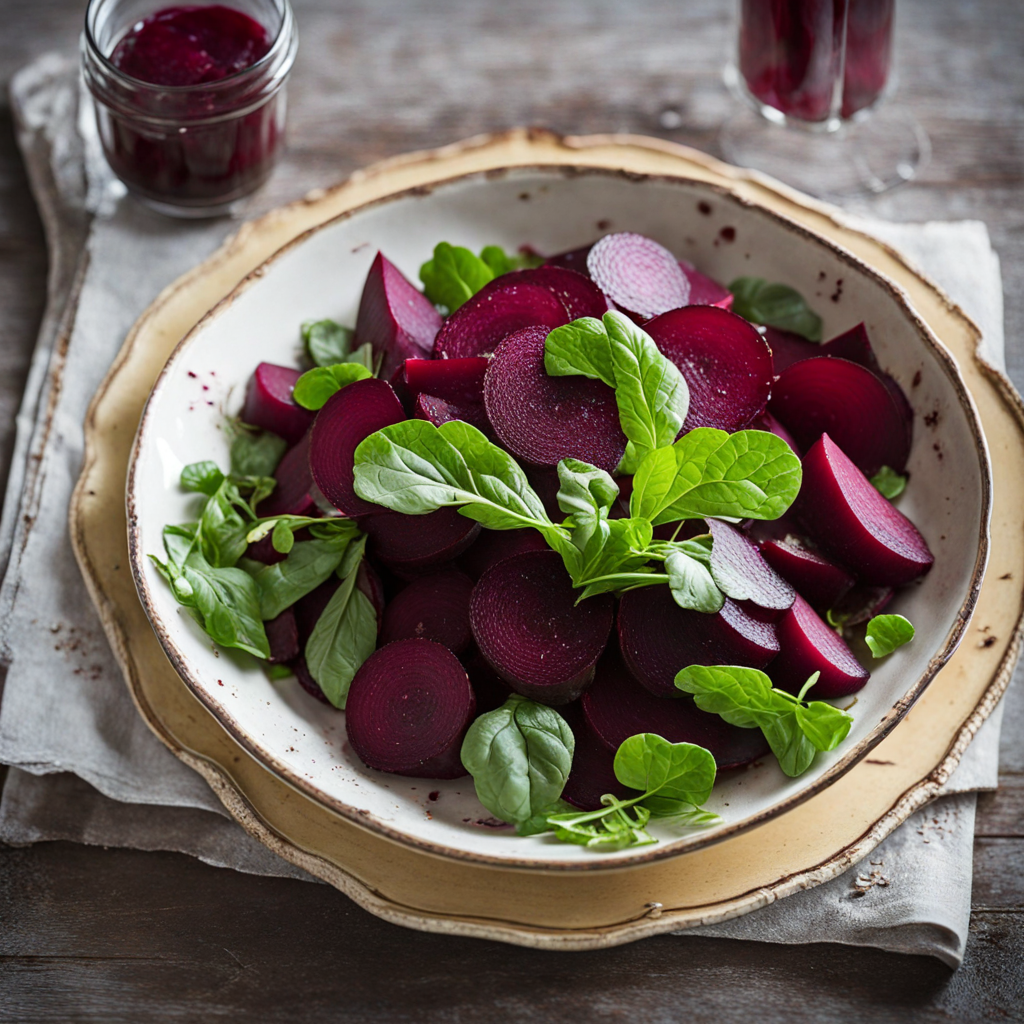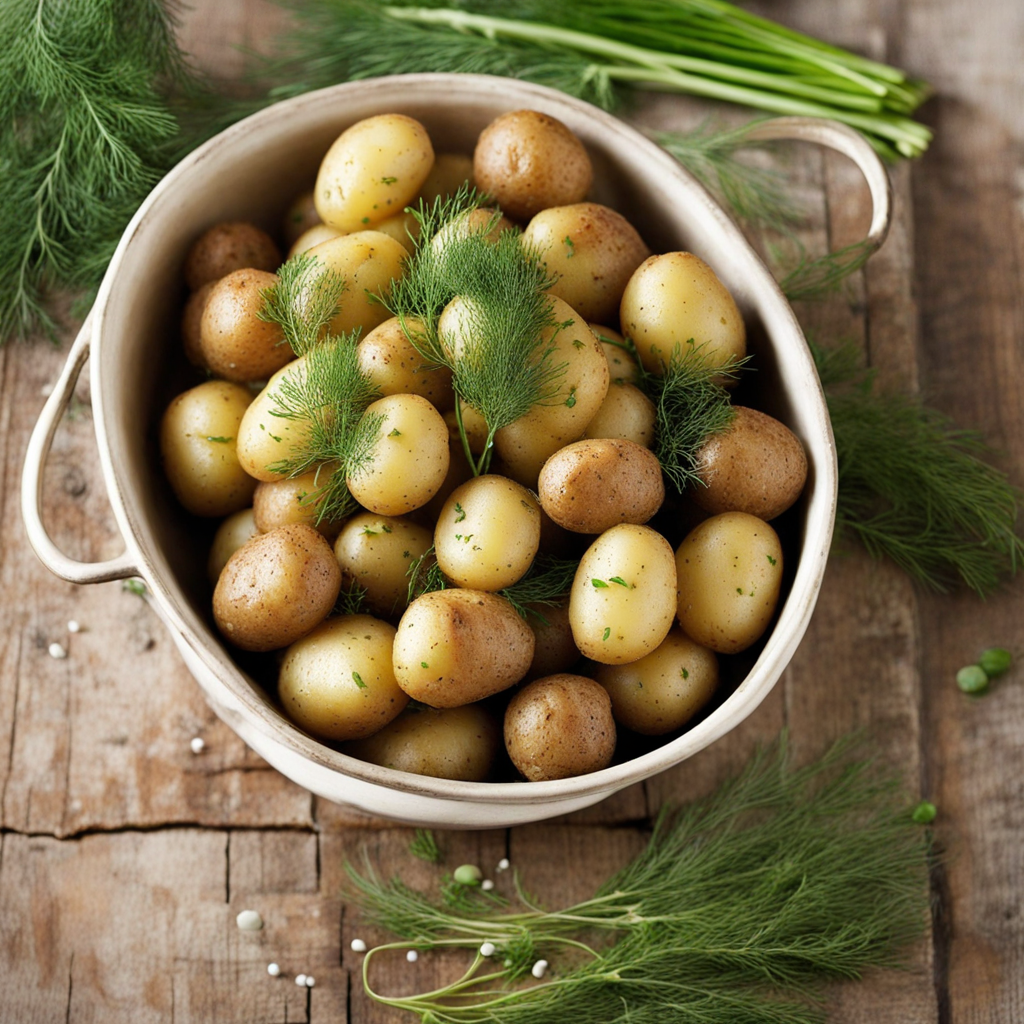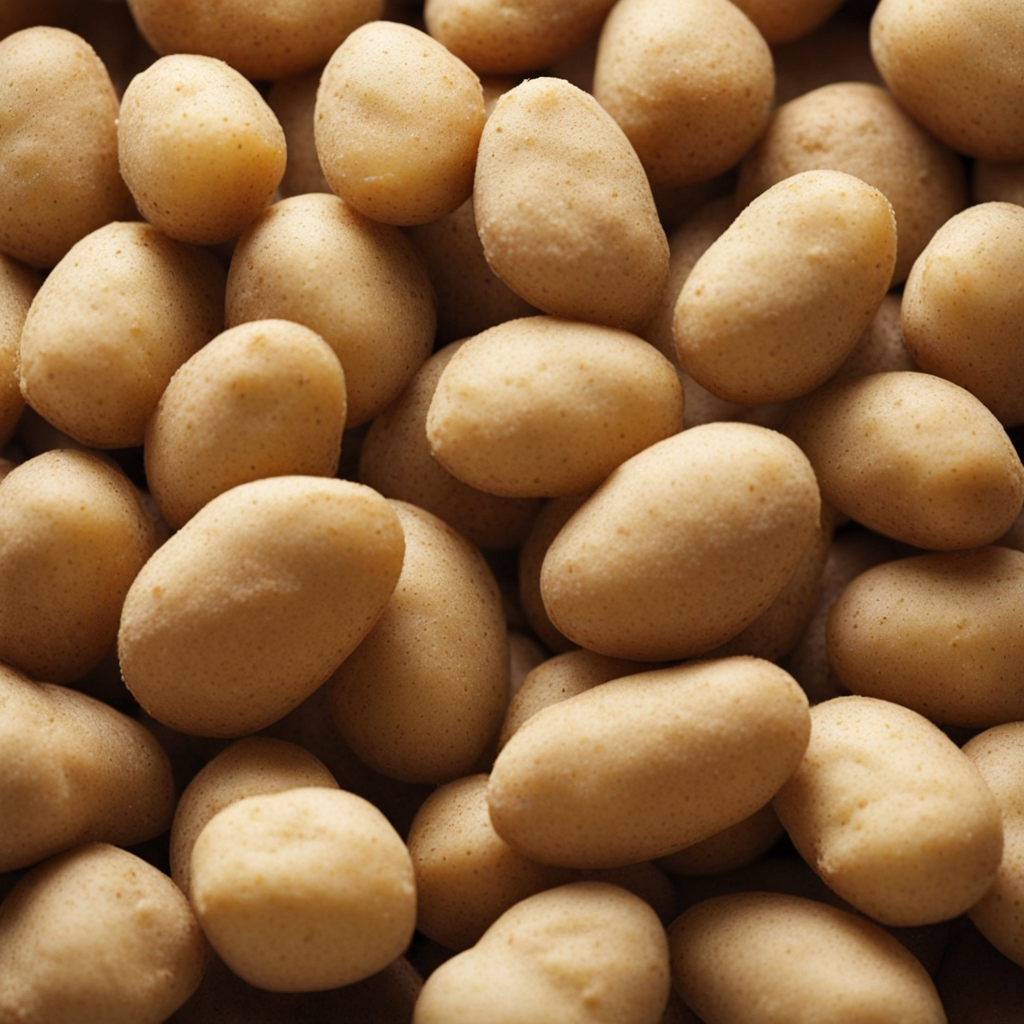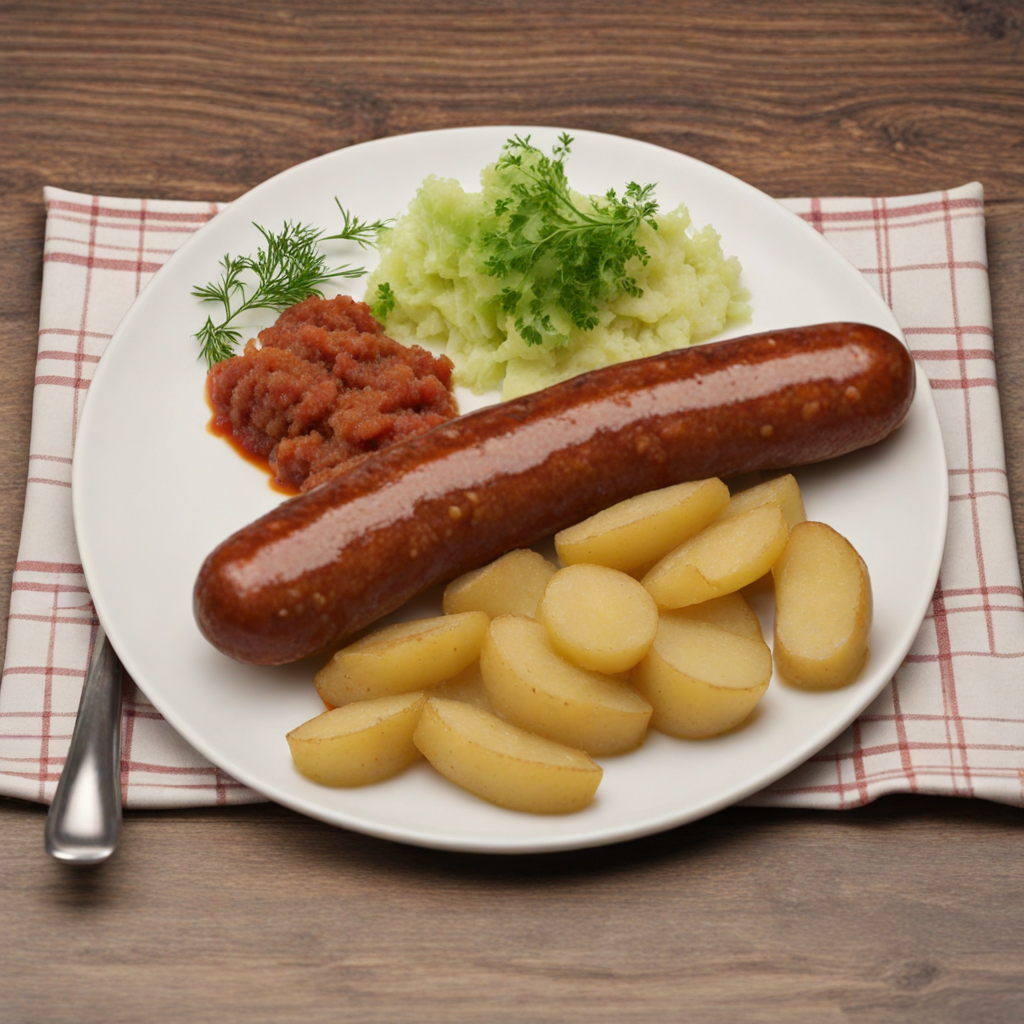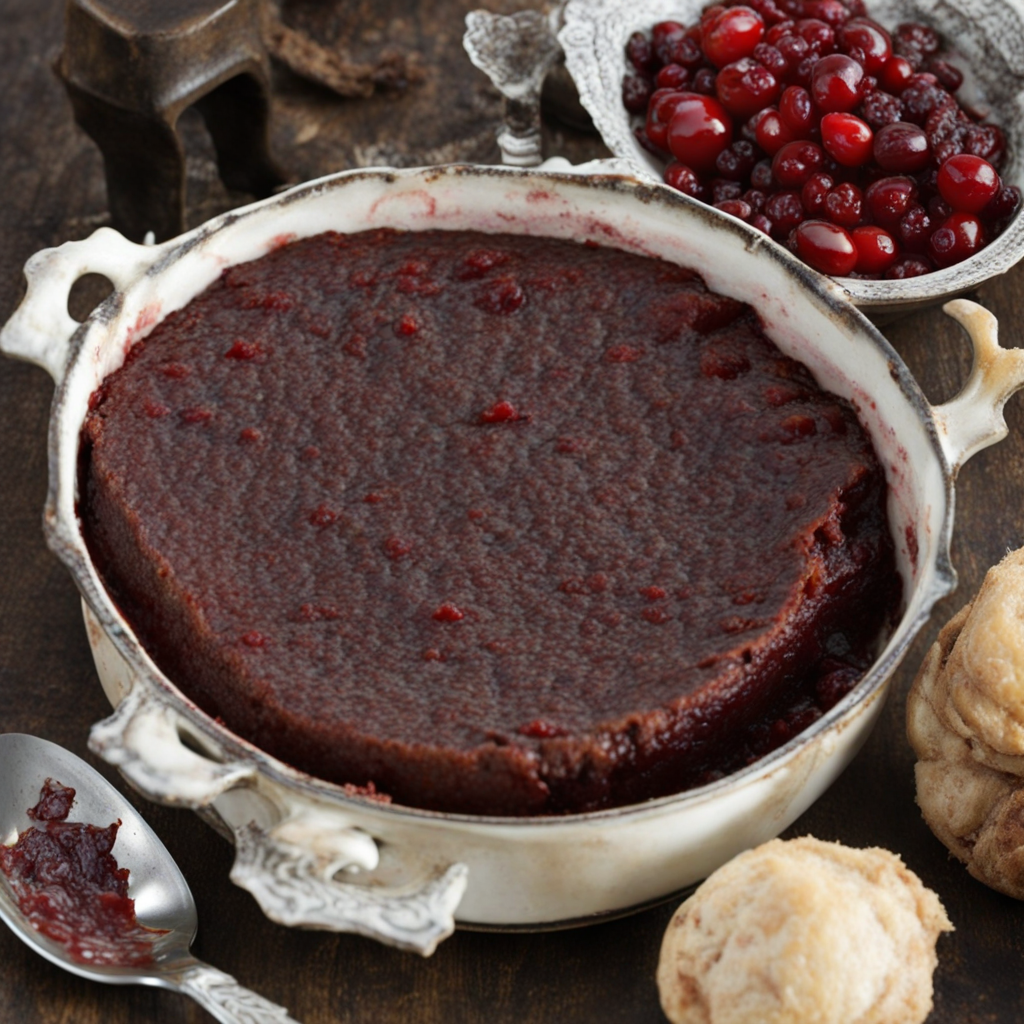Swedish Beetroot Salad
Swedish Beetroot Salad, known as "Rödbetssallad" in Sweden, is a vibrant and hearty dish that showcases the earthy sweetness of beetroots. The salad typically combines roasted or boiled beets, which are often peeled and diced into bite-sized pieces, with a medley of other ingredients that enhance its rich flavor. Common additions include finely chopped onions, crisp apples, and sometimes even pickles, creating a delightful contrast in both texture and taste. The salad is often dressed with a tangy mixture of sour cream or yogurt, vinegar, and a sprinkle of fresh dill, which adds a refreshing herbal note that elevates the entire dish. As you savor the Swedish Beetroot Salad, you’ll be greeted with a symphony of flavors. The beets provide a sweet, earthy foundation, while the tartness from the dressing and the crunch from the apples and onions add complexity. The vibrant red and purple hues of the beets not only make the salad visually appealing but also signal the nutritional bounty within, as beets are packed with vitamins and antioxidants. The balance of sweet, tangy, and creamy elements makes this salad a versatile choice, perfect as a side dish or even as a light meal on its own. This salad is often enjoyed during festive occasions and traditional Swedish meals, making it a beloved staple in Scandinavian cuisine. It pairs beautifully with hearty dishes like herring, meatballs, or roasted meats, offering a refreshing counterpoint that brightens the palate. Whether served at a summer picnic or as part of a cozy winter feast, the Swedish Beetroot Salad promises a delightful exploration of flavors, making it a must-try for anyone seeking to expand their culinary horizons.
How It Became This Dish
Rödbetssallad: A Tasty Journey Through Swedish Culinary History Rödbetssallad, or beet salad, is a vibrant dish that encapsulates the essence of Swedish cuisine, marrying simplicity with rich flavors and historical significance. Its bright red hue not only adds visual appeal to any meal but also symbolizes a deeper connection to the land, culture, and traditions of Sweden. Origins: Roots in the Soil The history of rödbetssallad begins with the humble beetroot (Beta vulgaris), a plant that has been cultivated since antiquity. The beetroot is believed to have originated in the Mediterranean region, where the leafy greens were consumed long before the root itself became popular. By the Middle Ages, beets were widely cultivated across Europe, including Scandinavia. In Sweden, beets thrived in the fertile soils and cooler climate, becoming a staple of the agricultural landscape. The enduring need for sustenance during the harsh winters led to the preservation of various root vegetables, with beets being a key component. The Swedish diet, heavily reliant on root vegetables, found a natural fit for beets, which could be stored for extended periods and served throughout the year. Cultural Significance: More Than Just a Salad Rödbetssallad is more than just a side dish; it is a symbol of Swedish identity. Traditionally served during festive occasions, such as Christmas and Midsummer, this colorful salad has become a beloved part of the Swedish smörgåsbord, a buffet-style meal that showcases the country's culinary diversity. The salad is often prepared with a combination of grated or diced beets, apples, onions, and sometimes a hint of horseradish or mustard to enhance the flavors. This combination reflects the Swedish ethos of balancing sweet and savory tastes, a hallmark of their culinary practices. Creamy dressings, often made with sour cream or mayonnaise, are commonly used, adding richness to the dish. The cultural significance of rödbetssallad extends beyond the dining table. Beets have long been associated with fertility and good fortune in Swedish folklore. The vibrant color of the root vegetable symbolizes vitality and health, making it a fitting choice for celebrations. Additionally, the preparation and sharing of rödbetssallad during communal meals reinforce social bonds among family and friends. Development Through Time: From Rustic to Refined As Sweden entered the 19th century, the industrial revolution began to transform food production and consumption. The rise of urban centers and changing lifestyles brought about new culinary trends. Traditional recipes, including rödbetssallad, began to evolve, reflecting the influences of modernization and globalization. In rural households, rödbetssallad was often prepared with whatever ingredients were available, showcasing regional variations. As the country became more connected, the ingredients and preparation methods started to standardize. The addition of apples, for instance, became popular due to the abundant apple orchards in Sweden, while the use of horseradish was inspired by the growing influence of German cooking. By the 20th century, rödbetssallad emerged as a fixture in Swedish homes and restaurants alike. It became a staple at festive gatherings and family celebrations, symbolizing both tradition and innovation. The dish was often served alongside cured meats, fish, and other traditional Swedish fare, reflecting the country’s agricultural bounty. In the post-World War II era, rödbetssallad gained further popularity, as Sweden experienced a culinary renaissance. The food culture began to embrace the notion of "New Nordic Cuisine," which sought to elevate traditional dishes while respecting local ingredients and sustainable practices. Chefs experimented with presentation and flavor combinations, breathing new life into classic recipes. Rödbetssallad was no exception, as gourmet restaurants began to showcase refined versions of the salad, often with a contemporary twist. Modern Interpretations and Global Influence Today, rödbetssallad continues to be a beloved dish in Sweden, enjoyed in homes, restaurants, and at celebrations. Its versatility allows for numerous interpretations, with chefs and home cooks alike experimenting with various ingredients and presentations. Some contemporary versions feature roasted beets, mixed greens, or even nuts for added texture. The global interest in healthy eating and plant-based diets has also contributed to the salad's popularity beyond Sweden's borders. As more people discover the nutritional benefits of beets—rich in vitamins, minerals, and antioxidants—rödbetssallad has found its way onto menus around the world, often served in a more modern context. Moreover, the rise of social media has allowed culinary enthusiasts to share their takes on rödbetssallad, further popularizing the dish. Food bloggers and influencers have introduced innovative recipes that embrace global flavors while honoring Swedish traditions, thus keeping the spirit of rödbetssallad alive. Conclusion: A Dish of Heritage and Future Rödbetssallad represents not only a beloved culinary tradition but also a reflection of Sweden's agricultural heritage and cultural evolution. From its rustic beginnings as a staple for survival to its status as a vibrant dish on modern tables, rödbetssallad has adapted and thrived through centuries of change. As Sweden continues to embrace its culinary roots while looking toward the future, rödbetssallad stands as a testament to the enduring power of food to connect people, celebrate heritage, and inspire creativity. Whether enjoyed at a festive gathering or as a simple weekday meal, this delightful salad embodies the heart and soul of Swedish cuisine, inviting all to savor its rich history and vibrant flavors.
You may like
Discover local flavors from Sweden


